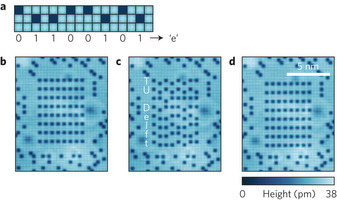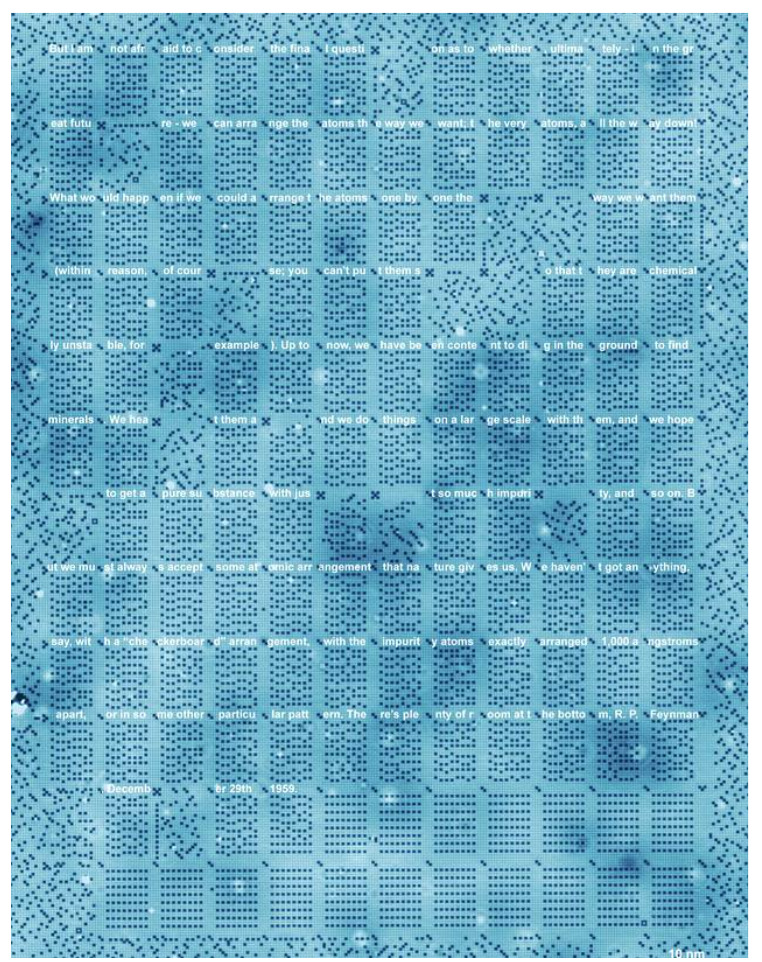A new technology for data storage at the atomic level could supplant magnetic and flash media in the future, and yield thousands of terabytes in a single drive — if scientists can perfect it.
Scientists have demonstrated the use of the location of single atoms to store bits of information in a study published by scientific journal Nature Nanotechnology. The new technology, dubbed atomic-scale memory, used a copper bed and 60,000 chlorine atoms, scattered at random and has managed to retain more than a single bit of information at the time.
Storage is measurable in areal density, or a measure of the quantity of information that can be stored in an area of media. The researchers claim that the areal density of the technology is 502 terabits per square inch. For comparison, currently shipping hard drives peak at an areal density of 1.34 terabits per square inch. Dual-layer Blu-ray disks peak at around 60 gigabits per square inch.
At present, the technology uses a scanning tunneling microscope to move and read the atoms' position. The relationship between an atom's location, and empty space on the copper bed encodes the data, as well as provides a primer for how to read the grid of atoms.
The bed first stored a part of Charles Darwin's "On the Origin of Species." After an initial write, the memory was then replaced with 160 words from a lecture by physicist Richard Feynman from 1959 that is credited for the first theories about atomic-scale data storage.
The initial write, and copper bed seeding, took about a week for a single kilobyte of information. The rewrite of the partially organized copper plate took a few hours.
Besides the drawbacks of formatting and write speed measurable in hours or days, the process also must be maintained at temperatures as close to absolute zero as possible. The data was stable up to 77 K (-321 F), which is much higher than previous experiments in the field. However, without maintaining the extremely low temperature, the normal migration of atoms destroys the stored data.
The researchers are moving on to other materials with physical properties similar to the chlorine and copper array, in an attempt to stabilize the lattice at higher temperatures.
"It's automated, so it's 10 times faster than previous examples," said IBM staff scientist Christopher Lutz about the breakthrough. Lutz also noted that "it's important not to see this one-kilobyte memory result as something that can be taken directly to a product."
 Mike Wuerthele
Mike Wuerthele








-m.jpg)






 Wesley Hilliard
Wesley Hilliard
 Malcolm Owen
Malcolm Owen
 Andrew Orr
Andrew Orr
 William Gallagher
William Gallagher
 Sponsored Content
Sponsored Content
 Christine McKee
Christine McKee

 Thomas Sibilly
Thomas Sibilly







42 Comments
This sounds like something Samsung should copy right away and launch in the fall...
I love reading this stuff, then you get to the gotcha, you have to be at almost absolute zero for it to work. Another example of interesting experiment but it will never see the light of day as a product. At least IBM is still involved in fundamental research like this. IBM has made most of the breakthroughs in storage technologies, most of which never yielded a product. Look up Raceway Memory.
Lost me at "the process also must be maintained at temperatures as close to absolute zero as possible."
Why are you crediting IBM when the research was from Delft University?